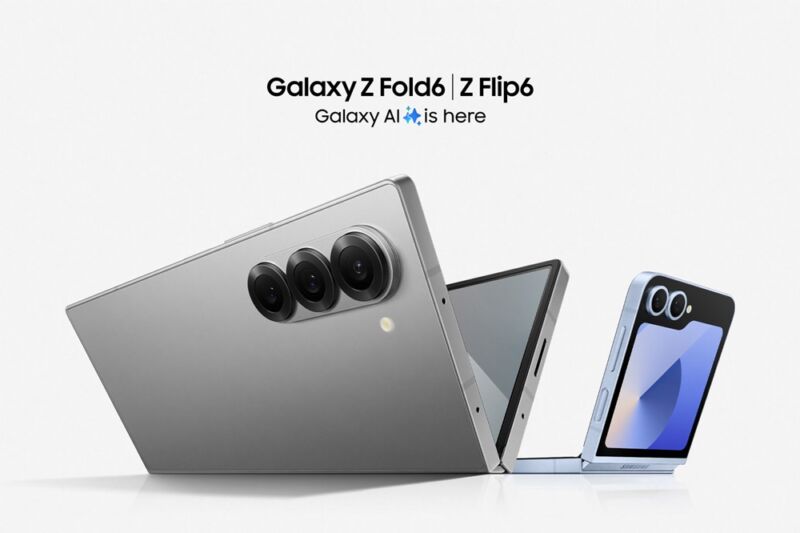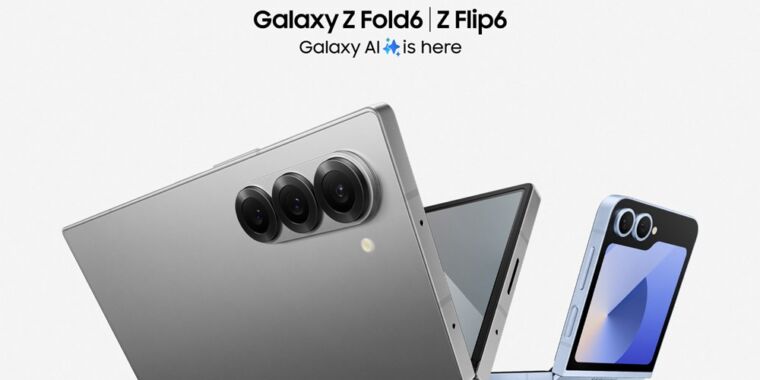
Samsung
Samsung, like every major tech company on the planet, led its Galaxy Unpacked event with a focus on its own AI offering, Galaxy AI. There were foldable phones, sure, but “Life Opens Up with Galaxy AI” was the first pitch of the event. The “Next Frontier of Mobile AI” is here, Samsung claimed, with “cross-device intelligence.” But, in a familiar tone, the company said its AI will be personalized for users, good for humanity, and empowering for creators.
Livestream of Samsung’s Galaxy Unpacked 2024 event.
But of course, the latest foldable devices, wearables and a brand new Galaxy Ring are “the ultimate way to experience Galaxy AI.”

Samsung
Galaxy Ring and Galaxy Watch Ultra
To bring Galaxy AI to your wrist and fingers, Samsung announced a seventh iteration of the Galaxy Watch, a rugged and larger Galaxy Watch Ultra, and the first iteration of the Galaxy Ring.
The Galaxy Ring ($400), at 7mm wide, 2.6mm thick and weighing 2.3–3g, competes with the Oura Ring. Samsung offers a sizing kit for its ring, which seems smart given the size difference between the category and standard rings and how likely you’ll be working out while wearing one.
The Ring will track heart rate, skin temperature, sleep, and general activity, plus all the AI-colored wellness stuff Samsung comes up with, like “Energy Score” and “Wellness Tips.” As you might imagine, the Galaxy Ring is Android-only, and offers a better experience when paired with a Galaxy phone. For instance, you can “double squeeze” to activate certain features — yes, something the Apple Watch and iPhone already do, but, hey, old habits die hard.
The Galaxy Watch 7 and Watch Ultra look remarkably similar to their sources of inspiration: the Apple Watch Ultra and the previous Galaxy Watch, respectively.
The Ultra model has a 10 ATM water resistance, an IP68 rating, a titanium case, and many of the familiar “orange means outdoors” colors. The orange “Quick Button” lets you access flashlight, swimming mode, or other functions. There are power saving modes that give you 100 hours of battery life, or up to 48 hours of continuous workout recording. There’s an emergency siren that can blast 85 dB from the watch, which is nice for anyone who accidentally discovers it.
The Galaxy Watch 7 looks a lot like its predecessor. Both it and the Ultra come with Wear OS 5 and One UI 6, a new 3nm Exynos W1000 chip, 2GB of memory and 32GB of storage.
They both also have sensors for heart and body composition, and new colored LEDs that measure more things. One of those things is “Advanced Glycation End Products,” which Samsung says can help its AI suggest diet and lifestyle changes (and which Samsung specifically not say is a blood glucose reading). The biggest new feature on both watches is sleep apnea detection, a first for modern wearables and approved by the FDA, at least as something safe to consider, if not a guaranteed indicator.

Samsung
Galaxy Z Fold and Z Flip 6
The Galaxy Z Fold 6 ($1,900) and Z Flip 6 ($1,100) get the sort of boosts from their predecessors that you’d expect. There’s a Snapdragon 8 Gen 3 chip inside. The folding glass on both is reportedly stronger and now rated to IP48, meaning dust resistance has been bumped from “X” (lucky) to “4” (1mm and larger particles), which is still unfortunate at these price points, but such is life on the foldable edge.
The Z Fold 6’s outward-facing display has gotten a tiny bit bigger (from 6.2 to 6.3 inches), though it keeps the same internal display. The cameras are largely the same (50-megapixel main, 10-megapixel telephoto, 12-megapixel ultra-wide), though the ultra-wide claims better low-light performance.
The most notable upgrades on the Z Flip 6 are its 4,000mAh battery and a vapor cooling chamber inside. The base model gets 12GB of RAM instead of 8, and 512GB of storage instead of 256GB on the base model.
Galaxy AI is here, even if you didn’t invite it
There are other products not mentioned here that Samsung announced today, including the Galaxy Buds3 and Buds3 Pro, wireless earbuds that may remind you of certain other very popular wireless earbuds . What Samsung really had to pitch today was how its own Galaxy AI was the connective tissue between all of these products.
The screens on the Fold and Flip models are great for circling things to search through. The cameras can auto-zoom, notes can be summarized and translations are everywhere. The watches and rings can track your health and suggest ways to improve it in all sorts of ways, which deserves a lot of openness about where all that data goes. Rick Osterloh, Google’s chief of devices and services, showed up to give a sort of Gemini blessing to Samsung’s efforts.
Samsung appears to have revealed the least of all the major tech companies about the origins, mechanics and specifics of its AI platform. The dedicated page for Galaxy AI offers only three vague sentences about the distinction between on-device and cloud-based AI processing, with one of them noting: “Most other functions that require a network connection use the cloud in some way.”
The most useful and immediate aspect of the AI blitz is this entry in the Galaxy AI FAQ: “Can I turn off the AI features?” Samsung says you can choose to disable AI or set it on the device only, and that there’s a “master switch” for cloud-based AI processing in the settings. It’s reasonable for a company to offer this after you’ve spent hundreds or thousands of dollars and might want to figure out its policies and strategies a bit first.
